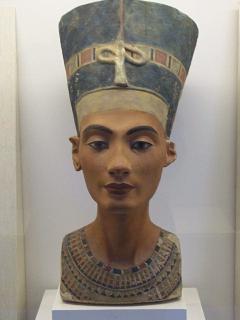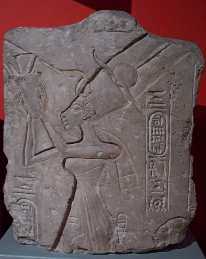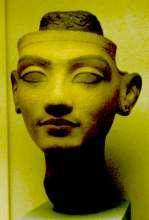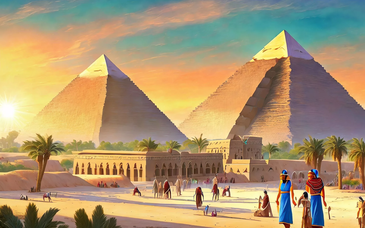
Famed throughout the ancient world for her outstanding beauty, Akhenaten's queen Nefertiti remains the one of the most well known of the queens of Egypt.

The famous statue of Nefertiti, found in a sculptors workshop in Akhetaten, is one of the most immediately recognisable icons from this period of history. It has escaped the excesses of the Amarna artistic style, and survived the wholesale destruction of Akhenaten's monuments after his death.
Little is known about the origins of Nefertiti but it seems unlikely that she was of royal blood. Her father was possibly a high official of Amenhotep III and Akhenaten called Ay, who went on to become Pharaoh after Tutankhamun.

Akhenaten and Nefertiti had six daughters, although the succession after his death is uncertain as there is no record of a male heir. It is possible that Akhenaten's successors Smenkhkare and Tutankhaten were his children by another royal wife called Kiya who became his principle queen for a short while after year 12 of his reign.
Nefertiti seems to have taken a hitherto unprecedented level of importance in the Amarna period art. As in the example shown above from the Ashmolean Museum in Oxford she is often shown making offerings to the Aten, and appears to be almost the Pharaohs equal in terms of status.

As with Akhenaten there is no trace of Nefertiti's mummy. Some jewelry bearing her cartouche was found outside the royal tomb at Akhetaten but there is no real evidence that she was buried there. From surviving record it seems she either fell from favor or died at around year 12 of Akhenaten's reign. In this case her burial may have been elsewhere.
It is interesting to consider that the busts on this page were found in a sculptors workshop at Akhetaten. It seems that when the city was abandoned they were left behind because such was the anti Atenist feelings that no one wanted them.



